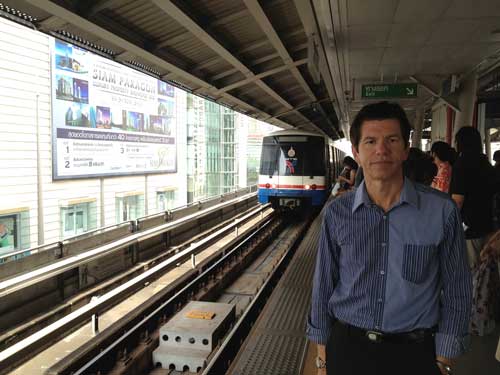The ‘China, China, China’ drum continues to beat loudly in exporters’ ears and appears to be the so called ‘obvious’ first choice for many companies looking to Asia to expand their returns. However, the dynamic of the unfolding ASEAN region and the AEC (Asian Economic Community) slated for a 2015 launch should really underpin any decision on where to go first. Many companies continue to look at Asia from their own perspective and seem oblivious to the economic strategies being driven within the region.
As Western economies have slowed in recent years there is a clear impetus for Asian companies to do more business within their own region. Indeed, many have identified their reliance on Western business to be a liability and have been developing more of a regional focus to take advantage of the formation of the AEC. With a vision of a Free Trade area comprising 600 million plus people, the ASEAN market arguably has more actual growth potential
than China.
So what is happening within the region?
One of the most significant developments is with Indian companies. India is not a part of the ASEAN region so many are setting up business in Thailand and Singapore to strengthen business relationships. The India-ASEAN FTA which has been in place since January 2010 helps them gain direct exposure to the wider ASEAN region right on their doorstep. In addition, they continue to sign individual FTAs with various countries in the region to underpin trade. Few would be aware of India’s “Look East” strategy that was launched in 1991. Twenty-one years on, it remains as relevant as at its inception. The easiest way to grow is to trade close to home and ASEAN is right next door. As one leading Indian conglomerate told us, “We prefer to find companies ourselves and then take them home to India with us – if they come alone to India my fellow countrymen have already taken their money and they have gone home broke before they found me!”
The lesson for exporters is that the ASEAN region could be an ideal base for their Indian aspirations.
Meanwhile China’s activity in outsourcing surprises many. There are hundreds of Chinese companies that have set up associated companies in Vietnam alone. Vietnamese labour rates are one of the lowest in the region but infrastructure problems continue to compromise returns. However, as across Asia, companies take a very long-term view and do not demand one and two year returns as is often the case in the West. As whole countries beat a path to China’s front door, they are headed out the back.
But is this activity merely a low cost strategy or are these Chinese businesses actually more about deepening their sales in the region?
Japanese activity in the ASEAN region offers some insight. Brewer Sapporo exited Japan in 2004 having found the complexities of business and returns did not offer them a sustainable position. However, they are well advanced in Vietnam and it is interesting to read recent Bloomberg commentary on this activity. The first is to consider a unique population demographic – the average age of this 90 million population is just 27 years of age.
The second is to look at the beer market in Asia-Pacific where China accounted for 71 percent of consumption but just 15 percent of returns. The average price of beer in China is around 25 Euros per 100 litres compared to 60 Euros in Vietnam and 51 Euros in India.
Two huge lessons for exporters here – demographic and margin management are an intrinsic part of any international expansion.
There are many other such in-market indicators that remain hidden from those considering their Asia strategy from afar. Companies need to get a lot smarter with their in-market research. Only then can they truly understand their options. The rewards are simple: great sales or mediocre, high margin or profitless volume, and ultimately, their success or failure.




